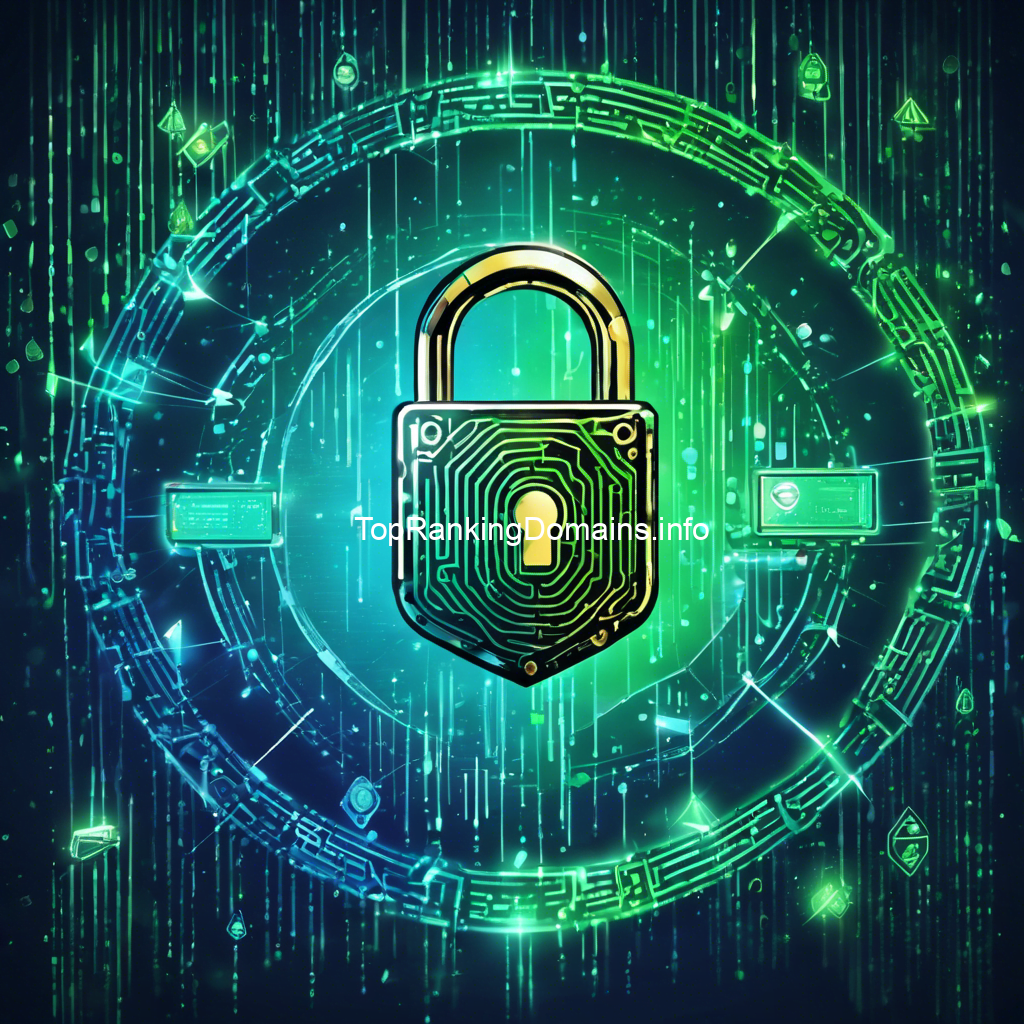The Ultimate Guide to Protecting Cryptocurrency Investments
Importance of Protecting Cryptocurrency Investments
Cryptocurrency investments are becoming increasingly popular, but it is crucial to protect them from risks such as theft and loss. Understanding the risks involved in the cryptocurrency market is essential to develop effective protection strategies. Best practices for securing cryptocurrency investments include using secure storage options like hardware wallets and paper wallets. Backing up wallets is important to prevent loss, and recovery options should be considered in case of theft. Two-factor authentication adds an extra layer of security to accounts and is highly recommended. Diversifying cryptocurrency portfolios and implementing risk management strategies can help protect investments. In conclusion, protecting cryptocurrency investments is of utmost importance due to the potential risks involved, and following these security measures can help ensure their safety. Next steps and resources for enhancing security practices should be explored to stay updated with evolving threats.
Understanding the risks involved in the cryptocurrency market
The cryptocurrency market is a volatile and unpredictable landscape, filled with risks that can greatly impact your investments. Understanding these risks is crucial to navigate the market effectively and protect your cryptocurrency investments. Some of the key risks involved include price volatility, regulatory uncertainty, cybersecurity threats, and the potential for scams and fraud. By familiarizing yourself with these risks and staying informed about market trends and news, you can make more informed investment decisions and mitigate potential losses. It is also important to conduct thorough research on the specific cryptocurrencies you are interested in and the platforms or exchanges you use to trade or store your coins. Additionally, diversifying your cryptocurrency portfolio can help minimize the impact of any single investment going bad. Always remember that investing in cryptocurrencies comes with its own set of risks, and it is essential to be aware and prepared to protect your investments.
Best practices for securing your cryptocurrency investments
When it comes to securing your cryptocurrency investments, there are several best practices you should follow. First, always use a strong, unique password for your wallets and exchanges, and consider using a password manager to keep track of them. Additionally, enable two-factor authentication whenever possible to add an extra layer of security. Regularly update your software and firmware to protect against any vulnerabilities. Be cautious of phishing attempts and only download software and apps from trusted sources. It’s also recommended to keep your cryptocurrency holdings offline in hardware wallets or paper wallets, as these provide maximum security. Lastly, consider diversifying your cryptocurrency portfolio to mitigate risk. By following these best practices, you can better protect your cryptocurrency investments and minimize potential losses.
Secure Storage Options for Cryptocurrency
When it comes to safeguarding your cryptocurrency investments, secure storage options are crucial. Two popular choices are hardware wallets and paper wallets. Hardware wallets, such as Ledger and Trezor, provide maximum security by keeping your private keys offline. These wallets require physical access and are immune to hacking attempts. On the other hand, paper wallets involve printing out your private keys and storing them in a secure location. This method is highly secure and can be easily generated using online tools. Whichever option you choose, it’s vital to keep your private keys offline and away from potential threats. Additionally, regularly back up your wallets and securely store the backups in separate locations. By utilizing secure storage options, you can protect your cryptocurrency investments from potential theft or loss.
Hardware wallets for maximum security
Hardware wallets, such as Ledger and Trezor, are the go-to option for maximum security in safeguarding your cryptocurrency investments. With these wallets, your private keys are kept offline, minimizing the risk of hacking attempts. To ensure optimal security, it’s crucial to keep your hardware wallet physically secure and never share your private keys with anyone. When setting up a hardware wallet, make sure to follow the manufacturer’s instructions carefully and enable any additional security features, such as PIN codes or passphrase encryption. Regularly updating your hardware wallet’s firmware also helps to protect against potential vulnerabilities. By utilizing a hardware wallet, you can have peace of mind knowing that your cryptocurrency investments are stored securely and reducing the risk of unauthorized access.
Paper wallets and cold storage solutions
Paper wallets and cold storage solutions are another secure option for protecting your cryptocurrency investments. Paper wallets involve generating a physical copy of your private keys and storing it in a secure location. This offline method prevents any potential online threats. Cold storage solutions, on the other hand, utilize hardware devices or USB drives to store your private keys offline. These devices are not connected to the internet, reducing the risk of hacking attempts. When using paper wallets or cold storage solutions, it’s important to keep multiple copies in different secure locations to prevent loss or damage. Additionally, ensure that your paper wallets or hardware devices are securely stored and protected from physical harm. By utilizing these offline storage options, you can significantly enhance the security of your cryptocurrency investments.
Backup and Recovery Strategies
Backing up your cryptocurrency wallets is crucial to protect your investments from potential loss or theft. Here are some strategies you can implement to ensure you have a secure backup and recovery system in place.
- Regularly Backup: Set a schedule to regularly backup your wallet data, including your private keys and wallet files. This can be done manually or by utilizing wallet software that offers automatic backup features.
- Multiple Locations: Store your backups in multiple secure locations, such as external hard drives, USB drives, or encrypted cloud storage. This will help protect against physical damage or loss of data.
- Test Your Backups: Periodically test the restoration process to ensure your backups are working correctly. This will help confirm that you can recover your funds if needed.
- Consider Offline Storage: Use cold storage solutions like hardware wallets or paper wallets for an extra layer of security. These offline methods remove the risk of online threats.
- Keep Passwords Secure: Encrypt and protect your passwords for your backup files to prevent unauthorized access.
By implementing these backup and recovery strategies, you can minimize the risks associated with potential data loss and enhance the security of your cryptocurrency investments.
Importance of backing up your cryptocurrency wallets
Regularly backing up your cryptocurrency wallets is crucial for protecting your investments from potential loss or theft. Without a backup, if your device malfunctions, gets lost or stolen, or your wallet files get corrupted, you could lose access to your funds forever. By creating regular backups, you ensure that you have a copy of your private keys and wallet files in a secure location. This allows you to restore your wallet and regain access to your funds in case of any unforeseen circumstances. It is recommended to set a schedule for backing up your wallets, whether manually or automatically with backup features offered by wallet software. Additionally, storing backups in multiple secure locations, such as external hard drives, USB drives, or encrypted cloud storage, provides further protection against physical damage or loss. Regularly testing the restoration process also confirms that your backups are working correctly and that you can successfully recover your funds if needed. Taking these precautions significantly reduces the risk associated with potential data loss and enhances the security of your cryptocurrency investments.
Recovery options in case of loss or theft
In case of loss or theft of your cryptocurrency, there are several recovery options you can consider. Firstly, you should report the incident to the authorities and provide any necessary evidence. Next, you can reach out to your wallet provider or exchange platform and inform them of the situation. They may be able to assist you in recovering your funds or taking appropriate actions to safeguard your account. Additionally, if you have enabled two-factor authentication, it is important to disable it immediately to prevent unauthorized access. You should also change your passwords and enable any security features provided by your wallet or exchange. It is recommended to monitor the blockchain for any suspicious activity and take necessary steps, such as freezing or blacklisting stolen funds. Seeking professional advice and assistance from experts in the field can also be beneficial in recovering your stolen cryptocurrency.
Importance of Two-Factor Authentication
Two-factor authentication is a crucial security measure for protecting your cryptocurrency investments. By adding an extra layer of verification, it significantly reduces the risk of unauthorized access to your accounts. To enable two-factor authentication, you typically need to link your account to a trusted device, such as a mobile phone or a hardware token. Whenever you log in or perform sensitive transactions, you will be required to provide a unique code generated by your trusted device. This code acts as a second factor of authentication, ensuring that only you can access your account. Two-factor authentication is highly effective in preventing hackers from gaining control of your cryptocurrency holdings, even if they manage to obtain your login credentials. It is strongly recommended to enable this security feature on all of your cryptocurrency wallets and exchange platforms to safeguard your investments.
Utilizing two-factor authentication for added security
Utilizing two-factor authentication for added security is a crucial step in protecting your cryptocurrency investments. To enable two-factor authentication, link your account to a trusted device such as a mobile phone or a hardware token. When logging in or performing sensitive transactions, provide a unique code generated by your trusted device. This code acts as a second factor of authentication, ensuring only you can access your account. Enable two-factor authentication on all your cryptocurrency wallets and exchange platforms to safeguard your investments effectively.
Recommended authenticator apps and methods
When it comes to protecting your cryptocurrency investments, utilizing recommended authenticator apps and methods is essential. Some popular authenticator apps include Google Authenticator, Authy, and LastPass Authenticator. These apps generate unique codes that serve as a second factor of authentication, providing an extra layer of security. To set them up, follow the app’s instructions and link your accounts to generate the codes. Remember to keep your authenticator app up to date and secure your device with a strong password or biometric authentication. Additionally, consider using hardware tokens such as YubiKey or Trezor for enhanced security. These physical devices provide an offline and secure method of generating unique codes for two-factor authentication. By implementing recommended authenticator apps and methods, you can protect your cryptocurrency investments from unauthorized access and potential breaches.
Diversification and Risk Management
Importance of Diversification and Risk Management
Diversification is a crucial strategy for protecting your cryptocurrency investments. By spreading your investments across different types of cryptocurrencies, you can reduce the impact of any single asset’s volatility. Additionally, it’s essential to allocate your investments across various sectors and geographies to minimize risk.
Risk management is equally important in protecting your cryptocurrency investments. Setting a clear risk tolerance and sticking to it will help you avoid making impulsive decisions based on market fluctuations. Implementing stop-loss orders, which automatically sell your cryptocurrency if its price falls below a certain point, can limit potential losses. Regularly monitoring the market and staying informed about industry trends is also vital for effective risk management.
By diversifying your portfolio and implementing risk management strategies, you can protect your cryptocurrency investments and increase your chances of long-term success. Remember to review and adjust your investment strategy regularly to ensure it aligns with your financial goals and risk tolerance.
Benefits of diversifying your cryptocurrency portfolio
Diversifying your cryptocurrency portfolio offers a range of benefits. Firstly, it helps to mitigate risk by reducing the impact of any single asset’s volatility. By investing in different types of cryptocurrencies, you can spread your risk and potentially increase your chances of long-term success. Additionally, diversification allows you to take advantage of opportunities across different sectors and geographies, ensuring that you’re not overly exposed to any one market or region. This can help to protect your investments during times of market volatility or economic downturns. Furthermore, diversification can also provide a chance for higher returns, as different cryptocurrencies may have varying growth potential. Ultimately, by diversifying your cryptocurrency portfolio, you can enhance risk management, increase your investment opportunities, and potentially improve your long-term financial outcomes. Remember to regularly review and adjust your diversification strategy to align with your financial goals and risk tolerance.
Risk management strategies to protect investments
Implementing risk management strategies is crucial to protect your cryptocurrency investments. Here are some practical steps you can take:
- Diversify your portfolio: Spread your investments across different cryptocurrencies to mitigate risk and take advantage of various growth potentials.
- Set stop-loss orders: Establish predetermined price points to automatically sell your cryptocurrencies if they drop to a certain level, limiting potential losses.
- Stay updated on market trends: Regularly monitor the cryptocurrency market and stay informed about any news, events, or regulatory changes that could impact your investments.
- Use technical analysis: Learn technical analysis indicators to identify potential market trends and make informed trading decisions.
- Consider hedging strategies: Hedging involves taking positions that aim to offset potential losses in one asset with gains in another, reducing overall risk.
- Only invest what you can afford to lose: Avoid investing money that you cannot afford to lose entirely to safeguard your financial stability.
By implementing these risk management strategies, you can protect your cryptocurrency investments and navigate the volatile market more effectively.
Conclusion
In conclusion, protecting your cryptocurrency investments is of utmost importance in the volatile world of digital currencies. By understanding the risks involved, securing your investments with secure storage options, implementing backup and recovery strategies, utilizing two-factor authentication, and practicing diversification and risk management strategies, you can safeguard your investments and minimize potential losses.
Remember to regularly stay updated on market trends, news, and regulatory changes that could impact your investments. Additionally, only invest what you can afford to lose to protect your financial stability.
By following these best practices and taking proactive steps to protect your investments, you can navigate the cryptocurrency market with more confidence and security. Stay informed, stay vigilant, and always prioritize the safety of your cryptocurrency holdings.
Summary of key points for protecting cryptocurrency investments
Ensure the safety of your cryptocurrency investments by following these key points:
- Understand the risks involved in the cryptocurrency market, including volatility and security threats.
- Use secure storage options such as hardware wallets, paper wallets, and cold storage solutions.
- Implement backup and recovery strategies to protect against loss or theft of your cryptocurrency wallets.
- Utilize two-factor authentication for added security, using recommended authenticator apps and methods.
- Diversify your cryptocurrency portfolio to spread risk and protect against market fluctuations.
By following these best practices, you can safeguard your investments and minimize potential losses in the fast-paced world of cryptocurrencies.
Next steps and resources for enhancing security practices
Next steps and resources for enhancing security practices:
- Stay updated: Keep up with the latest news and developments in the cryptocurrency industry to stay informed about potential security threats and vulnerabilities.
- Educate yourself: Take the time to understand various security measures and best practices for protecting your cryptocurrency investments. Resources such as online forums, blogs, and tutorials can provide valuable insights.
- Use reputable exchanges: Research and choose reputable cryptocurrency exchanges that have a proven track record of security measures and strong customer support.
- Enable multi-factor authentication (MFA): Enable MFA on all your cryptocurrency accounts to add an extra layer of security. Use authentication apps like Google Authenticator or hardware tokens for an added level of protection.
- Regularly update and patch software: Keep your wallets, exchanges, and other cryptocurrency-related software up to date with the latest security patches and updates to prevent vulnerabilities.
Remember, the security of your cryptocurrency investments is in your hands. By following these next steps and utilizing available resources, you can strengthen your security practices and minimize risks.







